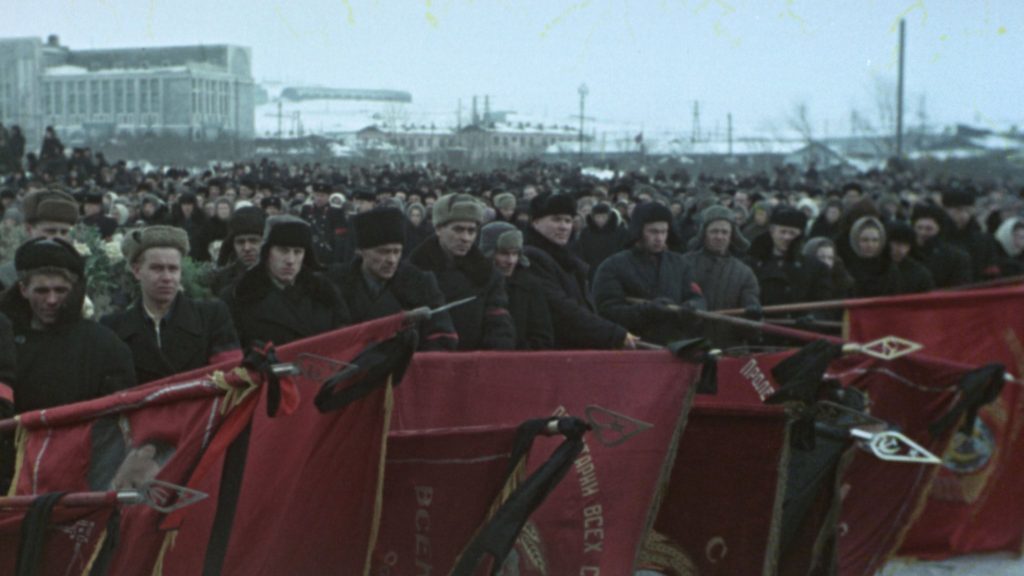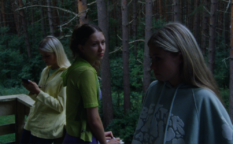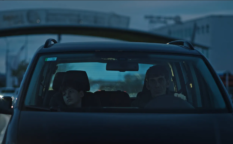Review: State Funeral (2019)

As Karl Marx once almost said: history repeats itself, first as farce, then as immersive documentary. Following Armando Iannucci’s dark 2017 comedy The Death of Stalin, Ukrainian director Sergei Loznitsa treats the same subject with forensic realism in State Funeral. Building on the observational style of Maidan (2014), The Event (2015) The Trial (2018) and more, Loznitsa’s latest deep dive into the bloody history of the Soviet empire and its aftermath turns to the death of Joseph Stalin in March 1953.
Premiered in Venice and Toronto last year, State Funeral is currently touring online European festivals, screening last week as part of Visions du Reel in Switzerland. Considering its grim subject matter and gloomy tone, it could have been dry history lesson but Loznitsa makes these momentous events feel hypnotic and immediate, playing on the viewer’s senses and emotions as if we are first-hand witnesses rather than distant voyeurs. The effect is more like time travel than journalism.
The film’s main focus is Stalin’s operatic funeral on March 9, 1953, which saw thousands of mourners crowded into Red Square alongside dignitaries from across the Communist world. Loznitsa builds an emotive audio-visual symphony from recurring visual motifs: armies of weeping peasants and workers, sombre news reports playing over crackling loudspeakers, hyperbolic tributes and doleful classical music, all topped off with long-winded speeches by bloated Party officials, 21-gun salutes and military parades. Meanwhile, similar ceremonies take place across the republics of the former USSR, across Soviet-occupied Eastern Europe and in sympathetic brother nations like China, Mongolia and North Korea.
Loznitsa found the raw material for State Funeral in the Russian state’s film archives, specifically The Great Farewell, an official cinematic memorial shot by multiple directors including Sergei Gerasimov and Ilya Kopalin. With delicious irony, this propaganda project was banned soon after completion because the political climate shifted after Stalin’s death, with Nikita Khrushchev openly condemning his predecessor’s murderous repression and personality cult. The footage remained under state censorship until the Soviet Union collapsed in 1991, and had been largely forgotten before Loznitsa unearthed it.
State Funeral is a triumph of technical detail. Loznitsa and his team have digitally cleaned up the footage and edited it into flowing montages, switching fluidly between crisp monochrome and colour, some of which appears newly colourised in gorgeously retro muted tones. Credit is also due to sound designer Vladimir Golovnitskiy and the film’s audio team, who add extra narrative cohesion with a meticulously detailed ambient soundtrack of crowd chatter, street noises, birdsong and music. The film’s closest cinematic cousin is probably Peter Jackson’s 2018 documentary They Shall Not Grow Old, which performed a similar makeover on British newsreel footage from World War I, although Loznitsa’s approach is less reliant on visual effects, more subtle and more formally conventional.
Loznitsa keeps the genocidal horror of Stalin’s reign off-screen, leaving viewers to fill in the unspoken terror and violence behind the mafia godfather visuals. There are grim ironies here, like the grey-faced Politburo waxworks who line up in a wintry Red Square to read their hysterically overblown tributes. Georgy Malenkov, a willing accomplice in Stalin’s bloodthirsty purges, calls his late boss “the greatest genius in the history of mankind”. Lavrentiy Beria, a serial rapist and mass murderer, assures the huddled crowd that “the steel will of of the Communist Party won’t be broken” by the loss of Russia’s immortal god-king. Malenkov was later deposed and exiled following a Kremlin power struggle. At the end of 1953, the repulsive Beria was executed as a traitor.
State Funeral is not a conventionally informative documentary. Its stately pace, repetitive rhythms and generous two-hours-plus running time all require patience and focus. But the film’s cumulative power lies in its understatement. Apart from vintage recordings of news reports and funeral speeches, there is no dialogue or editorial text on screen, adding to the sense of real-time immersive naturalism. Only when the final credits roll does Loznitsa remind us of Stalin’s staggering crimes against humanity: 27 million people murdered, tortured to death, imprisoned or exiled, with around another 15 million dying from starvation in state-imposed famines.
But State Funeral mostly offers a non-judgmental, cautionary primer in the seductive beauty of propaganda and the potent evergreen appeal of the strong authoritarian father-leader figure. Loznitsa is not mocking the weeping Russian crowds with the condescension of 21st century hindsight, nor is he even scolding the foreign leftist intellectuals who excused Stalin’s monumental crimes. Instead, the director paints a chilling picture of how nationalistic myth-making worked during the Soviet era, and how it still works today. As a Ukrainian, Loznitsa undoubtedly has parallels with Putin in mind, but these lessons also apply to Trump, Erdogan, Bolsonaro and other populist bullies. Almost 70 years later, this superb exercise in cinematic archaeology feels disturbingly contemporary.
Original Title: State Funeral
Running Time: 135 minutes
Language: Russian
Directed by: Sergei Loznitsa
Written by: Sergei Loznitsa
Editing: Danielius Kokanauskis
Sound designer: Vladimir Golovnitskiy
Colourist: Claudiu Doaga
Production companies: Atoms & Void, Studio Uljana Kim
















